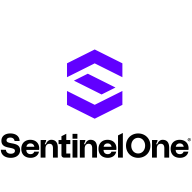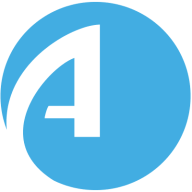


Prisma Cloud by Palo Alto Networks and Prevasio are competitors in the cloud security domain, each offering distinct advantages. Prisma Cloud's strengths lie in comprehensive multi-cloud security features, while Prevasio is noted for its robust dynamic workload capabilities.
Features: Prisma Cloud boasts automated forensics, strong identity management, and seamless integration across cloud environments. It effectively provides Cloud Security Posture Management, Cloud Workload Protection, and Cloud Infrastructure Entitlement Management. Prevasio excels in dynamic workload management and offers an application dependency map for cross-environment compliance. Automated vulnerability scanning is a key strength.
Room for Improvement: Prisma Cloud could enhance its user interface fluidity, improve pricing transparency, and strengthen API security. Furthermore, it requires better documentation for new cloud services. Prevasio needs to enhance its documentation, increase transparency in its security checks, and refine its pricing models for clearer value perception.
Ease of Deployment and Customer Service: Prisma Cloud supports deployment across public, hybrid, and private clouds, providing wide environmental compatibility. Its customer service is generally positive, though improvement is needed in response times and regional support consistency. Prevasio, while reliable with hybrid deployment, has limited detailed feedback on its support, which is generally considered dependable.
Pricing and ROI: Prisma Cloud's comprehensive pricing structure is justified by its broad security capabilities, though there's a need for clearer pricing schemes for growth planning. Prevasio’s pricing is adaptable but varies by region, pointing to occasional discrepancies. Both demonstrate potential ROI through enhanced security posture and operational efficiencies.
| Product | Market Share (%) |
|---|---|
| Prisma Cloud by Palo Alto Networks | 14.5% |
| SentinelOne Singularity Cloud Security | 4.6% |
| Prevasio | 0.2% |
| Other | 80.7% |



| Company Size | Count |
|---|---|
| Small Business | 46 |
| Midsize Enterprise | 20 |
| Large Enterprise | 53 |
| Company Size | Count |
|---|---|
| Small Business | 3 |
| Midsize Enterprise | 1 |
| Large Enterprise | 6 |
| Company Size | Count |
|---|---|
| Small Business | 37 |
| Midsize Enterprise | 20 |
| Large Enterprise | 55 |
SentinelOne Singularity Cloud Security offers a streamlined approach to cloud security with intuitive operation and strong integration capabilities for heightened threat detection and remediation efficiency.
Singularity Cloud Security stands out for its real-time detection and response, effectively minimizing detection and remediation timelines. Its automated remediation integrates smoothly with third-party tools enhancing operational efficiency. The comprehensive console ensures visibility and support for forensic investigations. Seamless platform integration and robust support for innovation are notable advantages. Areas for development include improved search functionality, affordability, better firewall capabilities for remote users, stable agents, comprehensive reporting, and efficient third-party integrations. Clarity in the interface, responsive support, and real-time alerting need enhancement, with a call for more automation and customization. Better scalability and cost-effective integration without compromising capabilities are desired.
What are SentinelOne Singularity Cloud Security's standout features?SentinelOne Singularity Cloud Security is deployed in industries needing robust cloud security posture management, endpoint protection, and threat hunting. Utilized frequently across AWS and Azure, it assists in monitoring, threat detection, and maintaining compliance in diverse environments while providing real-time alerts and recommendations for proactive threat management.
Prevasio is an agentless cloud-native application protection platform (CNAPP) that provides increased visibility into security and compliance gaps, enabling cloud operations and security teams to prioritize risks and ensure compliance with internet security benchmarks.
Prevasio combines cloud-native security with SRI International's proprietary AI capabilities and AlgoSec’s expertise in securing 1,800 of the world’s most complex organizations.
Prisma Cloud by Palo Alto Networks provides comprehensive cloud-native security solutions. It covers dynamic workload identity, automated forensics, and multi-cloud protection, ensuring robust security across diverse cloud platforms.
Prisma Cloud delivers advanced capabilities for managing cloud security across AWS, Azure, and GCP platforms. It offers dynamic workload identity creation, real-time monitoring, and seamless integration into CI/CD pipelines. With automation, centralized dashboards, and enhanced visibility, users effectively manage security misconfigurations and vulnerabilities. While optimizing cloud environments through runtime protection and compliance, Prisma Cloud faces challenges with its navigation, pricing, and limited automation capabilities. Users seek improvements in API security, role-based access controls, and documentation quality, emphasizing the need for enhanced customization and reporting features.
What are the important features of Prisma Cloud?
What benefits or ROI should users consider in reviews?
Industries like finance and telecom rely on Prisma Cloud for managing cloud security posture and container security. Teams utilize its capabilities across hybrid and multi-cloud settings to ensure compliance and robust threat protection. Features like misconfiguration detection and runtime monitoring are critical in promoting security objectives in these sectors.
We monitor all Cloud-Native Application Protection Platforms (CNAPP) reviews to prevent fraudulent reviews and keep review quality high. We do not post reviews by company employees or direct competitors. We validate each review for authenticity via cross-reference with LinkedIn, and personal follow-up with the reviewer when necessary.